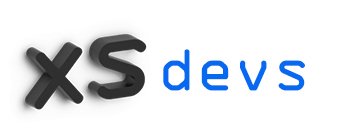Linux is an open-source operating system renowned for its versatility, security, and stability. It has gained widespread popularity and is widely used in various applications, from servers and embedded systems to personal computers. This beginner’s guide will provide you with a comprehensive introduction to Linux, covering its history, features, and basic commands.
Table of Contents
- What is Linux?
- The History of Linux
- Linux Distributions
- Getting Started with Linux
- The Linux File System
- Command Line Basics
- Installing Software in Linux
- Linux User Management
- Linux Shell Scripting
- Conclusion
- FAQs (Frequently Asked Questions)
1. What is Linux?
Linux is an open-source, Unix-like operating system kernel that serves as the foundation for various Linux distributions. It provides a stable and secure platform for running applications and services.
2. The History of Linux
Linux was created in 1991 by Linus Torvalds, a Finnish computer science student. It was developed as a free and open-source alternative to proprietary operating systems. Over the years, it has evolved into a robust and widely used operating system.
3. Linux Distributions
Linux distributions are complete operating systems based on the Linux kernel. They include additional software, libraries, and user interfaces to provide a complete user experience. Popular Linux distributions include Ubuntu, Fedora, Debian, and CentOS.
4. Getting Started with Linux
To get started with Linux, you need to choose a Linux distribution, create a bootable installation media, and install it on your computer. Many distributions offer live environments that allow you to try Linux without installing it.
5. The Linux File System
Linux uses a hierarchical file system structure. The root directory (“/”) is the top-level directory, and all other directories and files are organized beneath it. Understanding the file system is crucial for navigating and managing files in Linux.
6. Command Line Basics
The command line interface (CLI) is an essential part of Linux. It allows users to interact with the system using text-based commands. Learning basic command line operations is fundamental to working efficiently in a Linux environment.
7. Installing Software in Linux
Linux offers various package management systems that simplify the installation and management of software packages. The package manager handles dependencies, updates, and removals, making software management convenient.
8. Linux User Management
Linux is a multi-user operating system, allowing multiple users to have their accounts and settings. Understanding user management, including creating users, assigning permissions, and managing user groups, is essential for system administration.
9. Linux Shell Scripting
Shell scripting allows users to automate tasks and write scripts to execute a series of commands. Bash (Bourne Again Shell) is the default shell in most Linux distributions and is widely used for scripting purposes.
10. Conclusion
Linux is a powerful and versatile operating system that offers a range of benefits for both personal and professional use. Whether you are interested in system administration, software development, or exploring open-source technologies, Linux provides a robust platform to meet your needs.
11. FAQs (Frequently Asked Questions)
Q: Is Linux free?
Yes, Linux is free and open-source. You can download, install, and use Linux distributions without any cost.
Q: Can I run Linux alongside Windows?
Yes, you can dual boot Linux and Windows on the same computer. During the installation process, you can choose to install Linux alongside your existing operating system.
Q: What is a Linux distribution?
A Linux distribution is a complete operating system built around the Linux kernel. It includes additional software, tools, and user interfaces to provide a complete user experience.
Q: Can I install Linux on old hardware?
Yes, Linux is known for its ability to run efficiently on older hardware. There are lightweight distributions specifically designed for older computers.
Q: What programming languages are supported in Linux?
Linux supports a wide range of programming languages, including C, C++, Python, Java, Ruby, and more. Developers can choose their preferred language for software development in a Linux environment.

